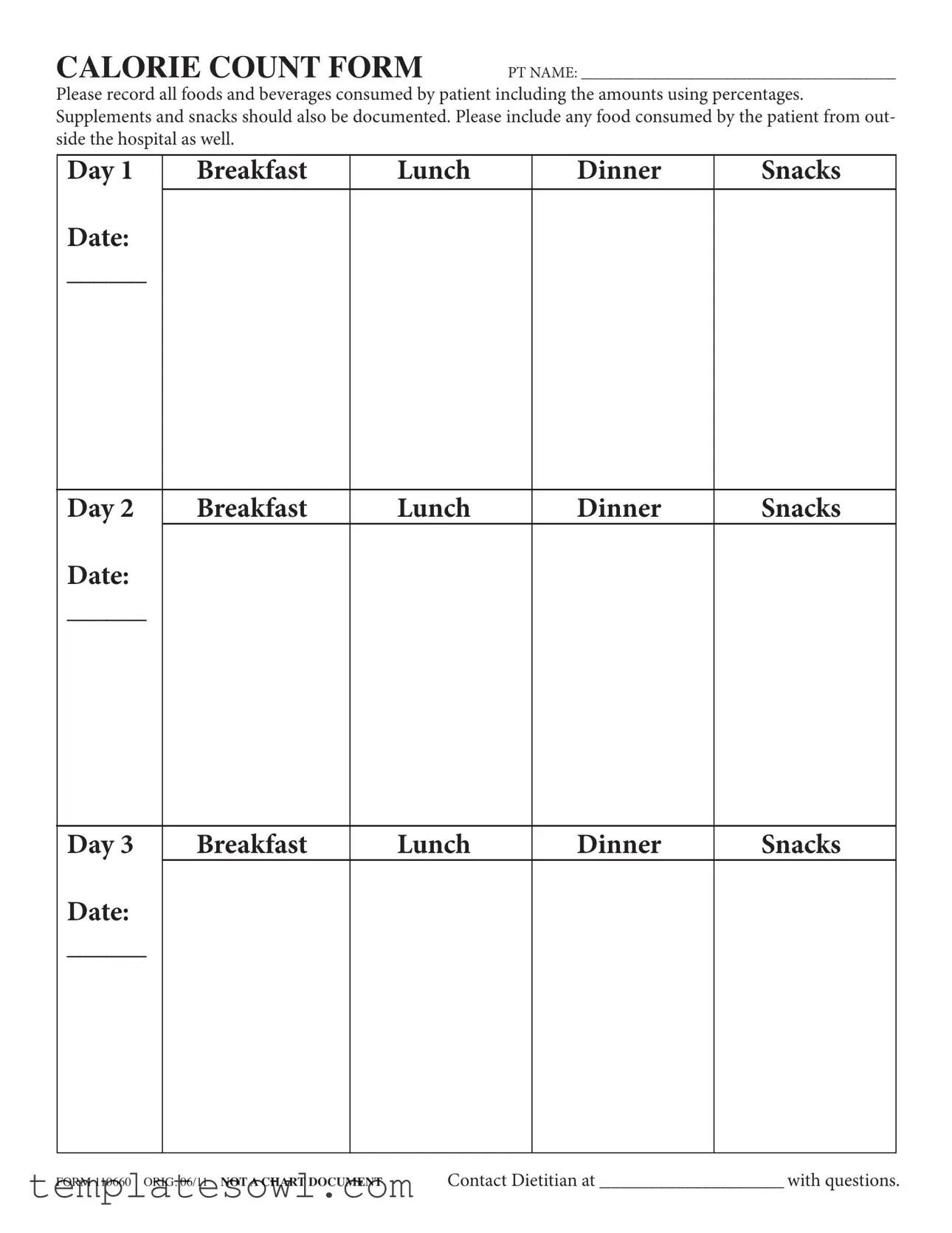What is the purpose of the Calorie Count form?
The Calorie Count form is designed to accurately track all foods and beverages consumed by a patient during their stay. This includes any meals, snacks, and supplements. By documenting this information, healthcare professionals can assess the patient's nutritional intake and make any necessary adjustments for optimal care.
How should foods and beverages be recorded?
All foods and beverages consumed should be recorded with attention to detail. The form requests that amounts be specified using percentages. This means that if a patient consumes half of a meal, you would note that as 50%. It is crucial to include every item, from main meals to snacks and any supplemental nutrition the patient may receive.
Do I need to include food consumed outside the hospital?
Yes, any food consumed by the patient outside the hospital must also be documented. This information provides a complete picture of the patient’s nutritional intake, which is essential for making informed dietary decisions and adjustments during their care.
How is the Calorie Count form structured?
The form is structured over three days, with sections for each meal: breakfast, lunch, dinner, and snacks. Each day is clearly labeled, allowing for organized tracking of the patient's intake. Make sure to fill out the date for each day you complete the form.
What should I do if I have questions about the form?
If you have any questions or concerns while filling out the Calorie Count form, it is recommended to contact the Dietitian listed on the form. They can provide guidance and clarify any uncertainties regarding the completion of the form.
Is the Calorie Count form a permanent part of the patient's medical records?
No, the Calorie Count form is not considered a chart document. It is a temporary tool used to gather nutritional data for the patient’s care. Once the necessary information has been collected and analyzed, the form typically may not be retained as part of the enduring medical records.
How often should the Calorie Count form be updated?
The Calorie Count form should be updated daily during the patient's stay. Each day’s meals and snacks should be documented as they are consumed. This ensures accuracy and allows healthcare providers to monitor the patient's nutritional habits effectively.
